In many chess tournaments, multiple players often end with the same number of points.
When that occurs, organizers need a fair and reliable way to rank those players, and that is where tiebreakers come in.
Although they might seem technical, knowing how tiebreakers work can benefit players strategically and help chess enthusiasts relate technicalities when interpreting the results, even if you are not looking to have a chess career in tournament directing.
In this article, we will break down the common tie-break method.
Why Are Chess Tiebreakers Necessary?
Organizing chess tournaments can be tricky, and one of the crucial aspects that organizers have to account for is the possibility of a tie-break.
A tie typically occurs when two or more players have the same number of points. In such cases, a tiebreaker is necessary for fairness and to determine a clear winner when titles and prizes are at stake.
Defined tiebreakers help avoid playing long playoff matches, especially in time constraints, which can lead to tournament delays, affect player schedules, and create uncertainty in determining winners.
Tiebreakers are essential in chess tournaments today because of their practicality and advantages.
Typically, one or more types of tiebreakers can be described for a tournament, and it is ranked based on importance, where the next hybrid in the list is used when a preceding tie-break does not break the tie.
If all the tiebreakers are exhausted, then the tie is broken by drawing lots.
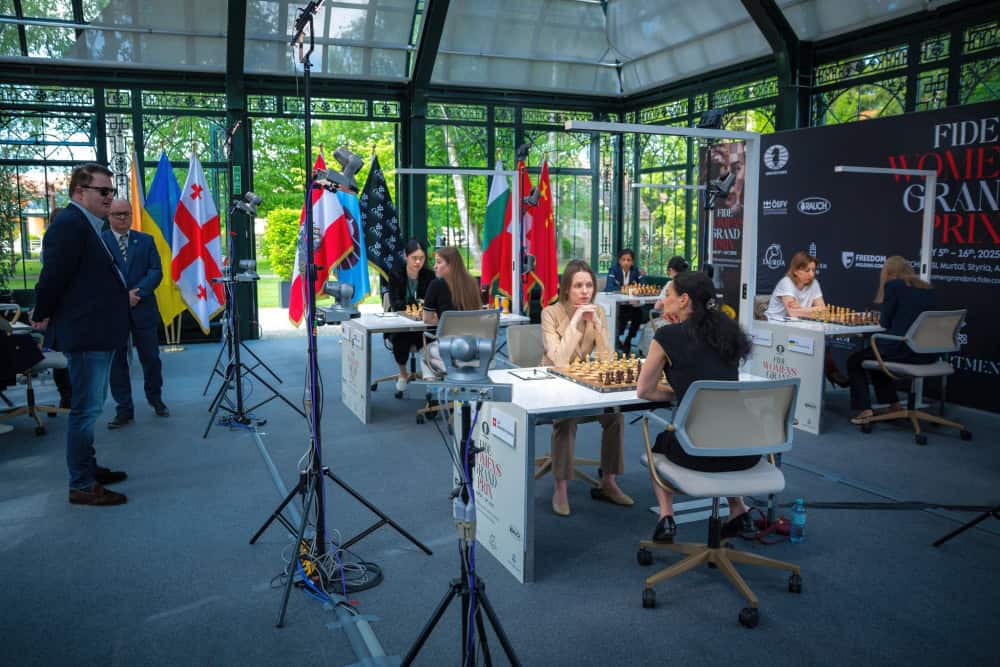
Common Chess Tiebreaker Systems Explained
Tournament organisers and arbiters can select from a wide range of tie-breaking systems, tailored to the tournament’s specific needs and regulations.
Some of the more common tie-break systems are described below.
Sonneborn-Berger Score
The Sonneborn-Berger Score is commonly used in round-robin tournaments to separate players with the same number of points in competitive play.
It typically rewards players who perform well against stronger opponents.
The calculation is straightforward: for each game won, the player had their opponent’s full score added to their Sonneborn-Berger total, while for each draw, they had half their opponent’s score, and losses contributed nothing.
This system values quality over quantity, where beating a top performer is worth more than winning a low scorer.
It also encourages consistent and high-level play at tournaments and provides a clearer reflection of performance than raw points total alone.
For example, players are motivated to challenge themselves against stronger opponents to improve their Sonneborn-Berger score.
However, it is not common in Swiss events because of the structure of Swiss-system tournaments. Sonneborn-Berger remains a trusted method for closed tournaments and team competitions.
Buchholz System
The Buchholz system remains one of the most widely used tie-break methods for Swiss-system chess tournaments.
It works by summing up the total score of all a player’s opponents, reflecting the strength of the competition faced.
As a case study, if two players both score 8 points and one, however, faced a stronger opponent overall, that player would be ranked higher.
This is to ensure that players who face more strenuous opposition and follow a stronger path are acknowledged.
Median-Buchholz
Median Buchholz is a variation of the standard Buchholz system used in Swiss-system chess tournaments.
Like the regular Buchholz, it adds up the final scores of a player’s opponent to estimate the overall strength of their opposition.
However, Median Buchholz adds an extra layer of fairness by removing the lowest and highest opponents’ scores from the calculation.
This change helps to reduce the impact of extreme results typical of unusual pairings or late-round drops, such as unexpected wins against top players that could skew the Buchholz scores.
It gives a balanced reflection of a player’s average opposition and is helpful in uneven fields.
The median Buchholz is a popular choice in many official tournaments because it smooths out anomalies to give a more reliable measure of player ranking, ensuring that unexpected results do not unfairly affect final standings.
Direct Encounter (Head-to-Head)
The direct encounter tie-break method is one of the most common types of tiebreakers used when players finish a tournament with the same score.
It typically compares the results of games played between the tied players. Here is how it works:
- If the tied players have played against each other, their scores from the games are used to rank them.
- Forfeit results are not used unless the tournament regulation says otherwise.
- In the likely case where the players have met each other more than once, their average score is used, not the total.
- When all tied players have faced each other, this tie-break method can determine their final rankings.
- In Swiss tournaments, when some games between the top players are missing, a clear top finisher can still be ranked first when they are clearly in the lead.
Number of Wins
As described by the FIDE Arbiter manual, “The number of rounds where a participant obtains, with or without playing, as many points as awarded for a win.”
This tie-break method rewards more aggressive and successive play, helping to distinguish between players with the same score but different win patterns.
For example, a player might draw a lot and end up with another player who won and lost most of the games.
Rating Performance
Rating performance tiebreakers are crucial in determining the best-performing players among those with equal points in a chess tournament.
They consider both wins and the strength of opponents faced. Rating performance tiebreakers are based not only on wins but also on the strength of the player’s opponents.
This method is used only when the player has an official FIDE rating unless special rules are in place for unrated players.
There are several systems, including:
- Tournament performance rating (TPR)
- Perfect tournament performance (PTP)
- Average performance of opponents (APRO)
- Average perfect performance of opponents (APPO)
Rating performance tiebreakers are used to determine and reward players who fought strong battles, even if they didn’t win every game.
They promote a fairer outcome by evaluating not only how many points are scored but also against whom.
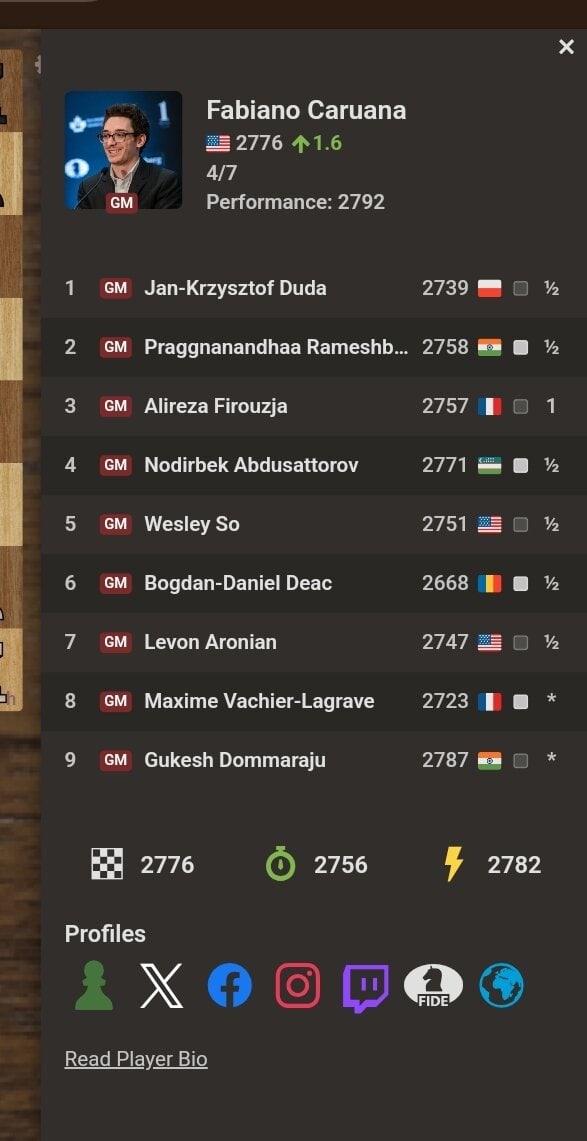
How Tiebreakers Affect Tournament Outcomes
It is very common for players to finish with the same number of points in a chess tournament.
This is where tiebreaker systems come in. Why they may seem like a technical detail, tiebreakers can significantly impact:
Final Standings
A tiebreaker determines who plays higher on the scoreboard when the scores are equal. This can affect:
- Determining titles and trophy distribution, such as the best junior or champion, can be influenced by tiebreakers.
- Prize money distribution.
- Qualification spots for higher-level tournaments.

Fairness and Recognition
Not all wins are equal, and tiebreaks help reward:
- Players who face more vigorous opponents
- Players who had more decisive games
- All players who won crucial head-to-head matches
This means that a player with the same score as someone else can place higher on the scoreboard because they had a more challenging path or defeated the other player in their head-to-head.
Strategic decisions
Understanding how tiebreakers work can influence in-game strategy.
For example, a player might push for a win instead of settling for a draw, or a player playing in a Swiss system tournament may prefer to face a higher-rated opponent if systems like TPR or Buchholz are used.
Controversy and Debate
Sometimes, fans and players question whether tiebreakers reflect actual performance, especially when a player beats the tournament leader but finishes lower because of technical criteria.
A mainstream incident happened at the 2024 World Rapid and Blitz with Magnus Carlsen inadvertently criticizing FIDE’s tie-break rules used for the event.

Which Tiebreaker Systems Are Most Common?
The most common tie-break systems you would likely come across in chess tournaments in 2025 and beyond include Buchholz, Median Buchholz, Direct Encounter, Number of Wins, and Sonneborn-Berger.
Buchholz and its variation, median Buchholz, are especially popular in Swiss-system tournaments. At the same time, Direct Encounter is frequently used when tied players have faced each other, giving priority to head-to-head results.
The number of wins rewards more sharp and decisive play, while Sonneborn-Berger is widely used in round-robin to value wins against more vigorous opponents.
So, when you next follow chess on platforms like the Chess-results website, you won’t feel lost.
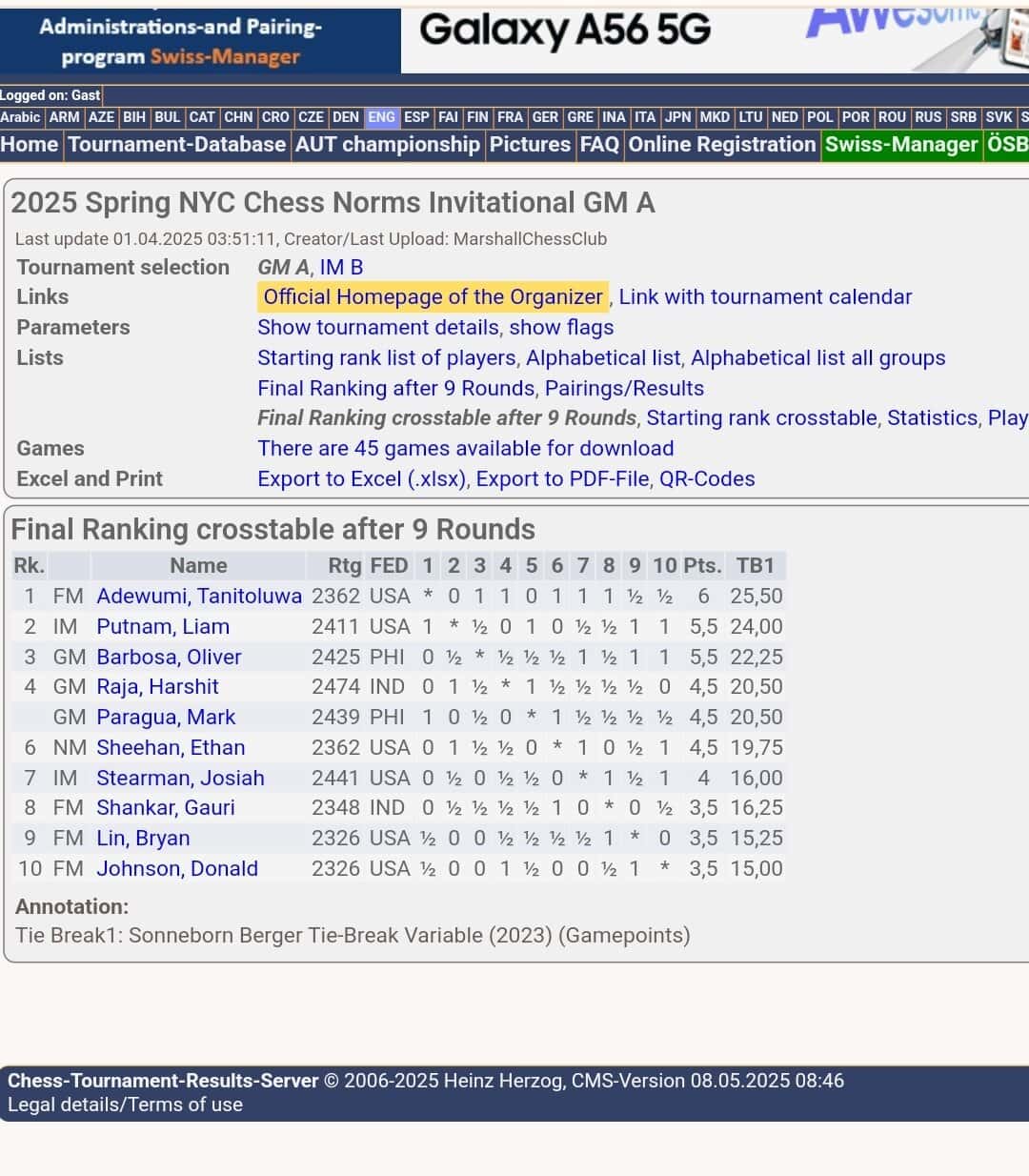
Conclusion: Mastering Chess Tiebreaker Rules
The most common ones include Buchholz (adds up your opponents’ scores), Median Buchholz (same as Buchholz but doesn’t include the strongest and weakest opponent), and direct encounter (who won between the tied players).
There’s also Number of Wins, which rewards players with aggressive and decisive games, and Sonneborn-Berger, primarily used in round-robins to give weight to wins against stronger players.
Understanding tiebreakers is crucial whether you aim to improve your results or closely follow tournaments.



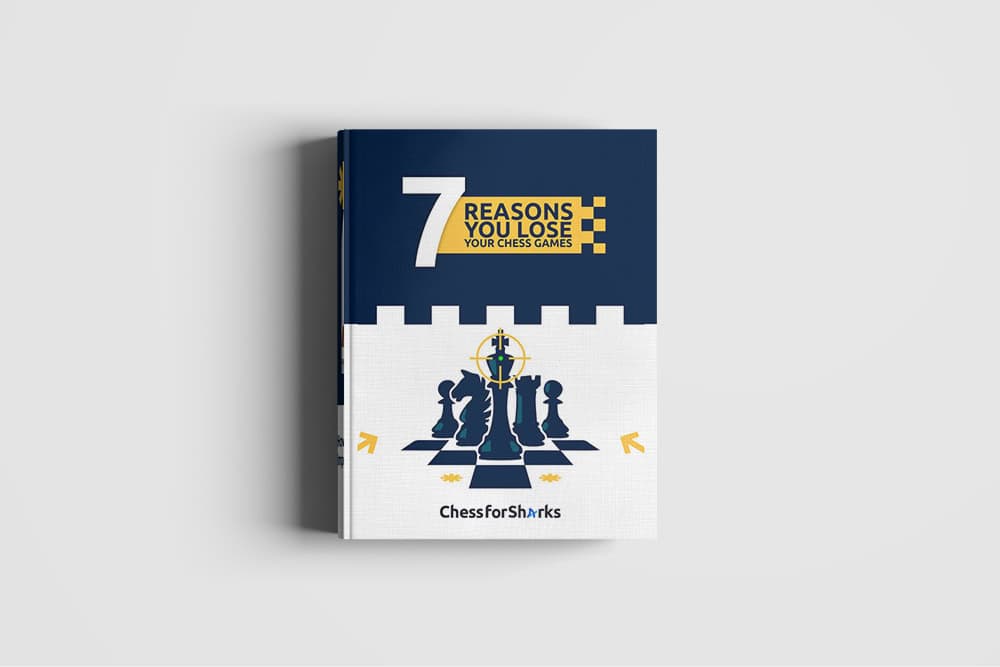

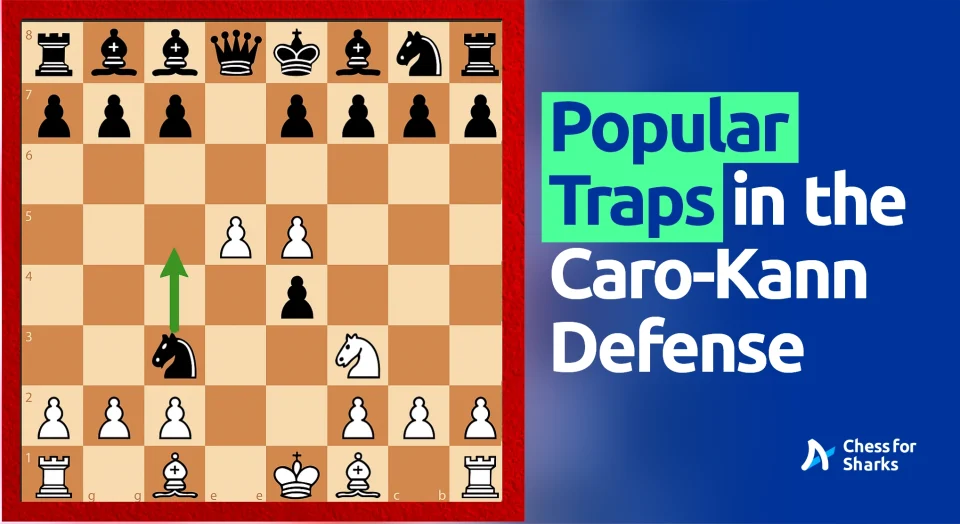
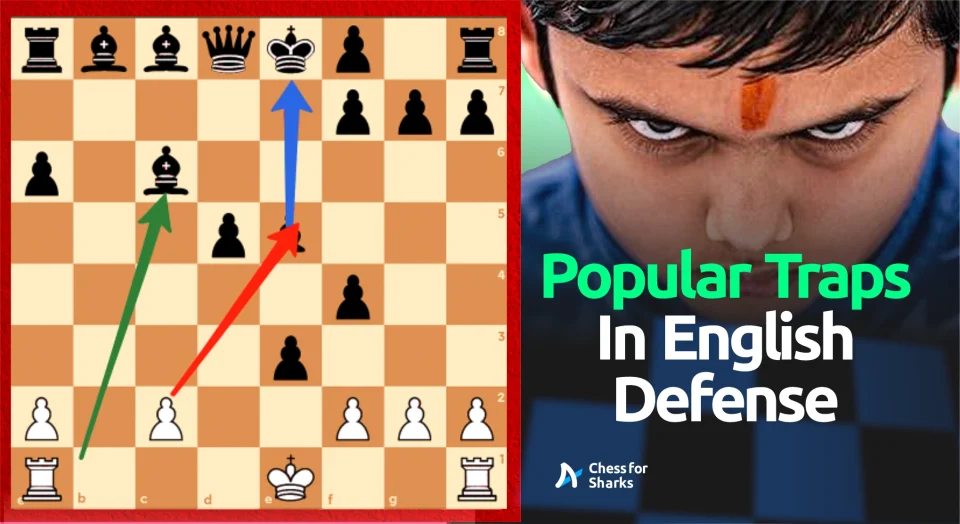
join the conversation